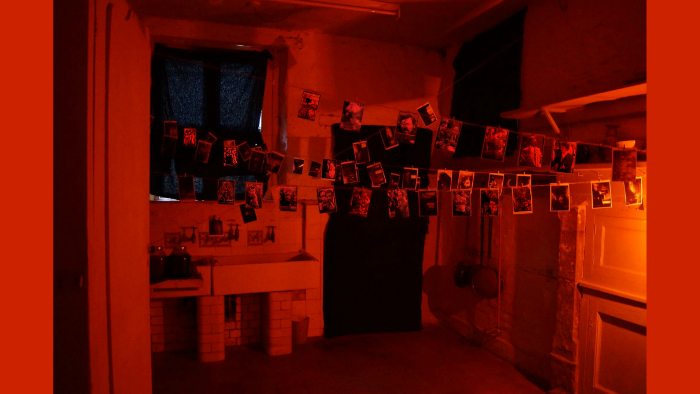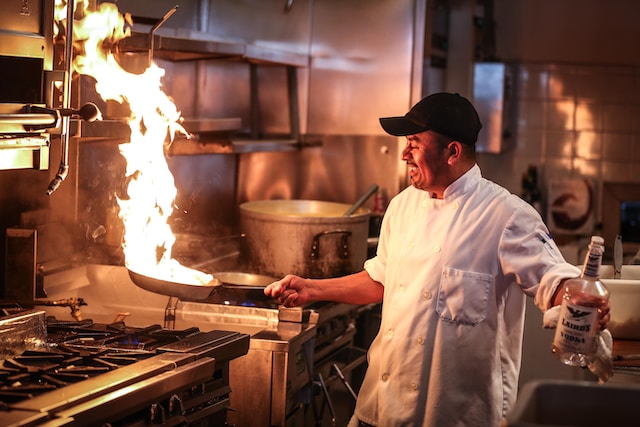Introduction
Step into a world where sight takes a back seat and every other sense comes alive. Darkroom-Core is an emerging aesthetic that blends shadowy visuals, deep contrasts, and minimalist design to create a unique atmosphere. Paired with dining in the dark, this trend turns an ordinary meal into an unforgettable journey of taste, touch, and memory. In this article, we’ll explore Darkroom-Core’s roots, its key visual elements, and how Dining in the Dark events harness this aesthetic to heighten sensory awareness. Get ready to discover how embracing darkness can illuminate new pleasures.
What Is Darkroom-Core?
Darkroom-Core is an art and design movement inspired by traditional photographic darkrooms, film noir, and chiaroscuro painting. It favors deep blacks, muted tones, and simple forms. Rather than vibrant colors or bright lights, Darkroom-Core relies on subtle textures, shadow play, and carefully placed highlights to guide the viewer’s eye. This aesthetic evokes feelings of mystery, intimacy, and focus.
Key Visual Elements
- High Contrast: Bold interplay between pitch-black areas and single light sources.
- Minimalist Details: Sparse decoration, often using metal, concrete, or matte black surfaces.
- Selective Lighting: Spotlights, candles, or low-watt bulbs that create pools of light.
- Monochrome Textures: Rich fabrics—velvet, leather, or matte ceramics—that feel luxurious under dim lighting.
- Geometric Shapes: Simple lines and forms help the mind find structure in the gloom.
By stripping away visual noise, Darkroom-Core encourages a deeper emotional response and sharper focus.
Origins and Influences
Darkroom-Core draws from several sources:
- Photographic Darkrooms: The places where light-sensitive images come to life in near-total darkness.
- Film Noir: 1940s–50s black-and-white cinema known for its moody shadows and dramatic lighting.
- Chiaroscuro Art: Renaissance painters like Caravaggio used stark light-dark contrasts to add depth and emotion.
- Gothic Minimalism: Modern design movements that favor dark palettes and minimal ornamentation.
These influences converge to form an aesthetic that feels both timeless and cutting-edge.
Dining in the Dark: A Sensory Experiment
Dining in the Dark is a concept where guests eat in near-total darkness, often blindfolded. This experience heightens taste, smell, touch, and hearing. When combined with Darkroom-Core décor, it becomes a fully immersive event.
How It Works
- Pitch-Black Environment: Rooms are totally dark or lit just enough for staff to navigate.
- Blindfolded Guests: Some venues provide blindfolds to eliminate any stray light.
- Tactile Menus: Menus may be Braille or described verbally by servers before the meal begins.
- Guided Service: Waitstaff are trained to guide diners and serve dishes without light.
- Multi-Course Menus: Each course focuses on a different flavor profile—sweet, sour, bitter, salty, and umami.
Removing sight forces diners to slow down and analyze each bite. The absence of visual cues can make familiar foods taste surprisingly different.
Benefits of Darkroom-Core Dining Experiences
- Heightened Flavors: Without sight, the tongue and nose focus more intensely on spices, textures, and aromas.
- Mindful Eating: Guests eat slower and chew more carefully, aiding digestion and enjoyment.
- Enhanced Social Connection: In darkness, diners rely on tone of voice and touch, deepening conversation.
- Novelty and Surprise: Each bite can be a delightful mystery, turning a meal into an adventure.
- Breaking Biases: Without visual presentation, preconceptions about food disappear, opening minds to new tastes.
Whether for a special date, team-building, or art-themed gathering, these events create lasting memories.
How to Host Your Own Darkroom-Core Dining Event
You can create a scaled-down version of Dining in the Dark at home or in a small venue. Follow these steps:
1. Choose Your Space
- Pick a room you can darken fully—no windows or with blackout curtains.
- Clear clutter and set up simple tables with matte black tablecloths and minimal decorations.
2. Light and Sound
- Use red night-lights or dim fairy lights hidden behind furniture for safe navigation.
- Play ambient, low-volume music—soft piano or atmospheric tracks work well.
3. Blindfolds and Seating
- Provide comfortable eye masks or soft blindfolds.
- Seat guests before darkening the room and explain the process clearly.
4. Menu Planning
- Select 4–6 bite-sized courses.
- Include contrasting textures (crunchy vs. creamy) and flavors (sweet vs. spicy).
- Pre-plate each course on black or dark gray dishes for hidden preparation.
5. Service Workflow
- Train servers or friends to move confidently in low light.
- Use trays or low-scent gloves to handle plates quietly.
- Announce each course verbally, describing taste themes but not ingredients.
6. Post-Dinner Debrief
- After unblinding, discuss guesses, surprises, and favorite dishes.
- Encourage sharing of sensory experiences and reactions.
This DIY approach brings Darkroom-Core’s intrigue to any dinner party without expensive equipment.
Best Places for Immersive Darkroom Dining
If you want a professional experience, seek out these types of venues:
- Specialty Dark Dining Restaurants: Cities like London and New York host permanent or pop-up “Dining in the Dark” restaurants.
- Art Galleries and Museums: Occasionally partner with chefs for themed dark dinners alongside exhibitions.
- Luxury Hotels: Some high-end properties organize exclusive sensory dining events for VIP guests.
- Wellness Retreats: Integrate dark dining into mindfulness and sensory-awareness programs.
Check local listings or social media for upcoming events in your area.
Tips for First-Time Darkroom Diners
- Keep an Open Mind: Expect the unexpected. Part of the fun is guessing ingredients.
- Dress Comfortably: Wear casual, dark clothing—no need for fancy outfits when you won’t see them!
- Mind Allergies: Let organizers know dietary restrictions in advance.
- Embrace the Silence: Use soft voices—loud noises carry further in darkness.
- Stay Present: Without screens or visuals, focus completely on the sensory moment.
By following these tips, you’ll maximize enjoyment and minimize any discomfort.
The Psychology Behind Darkness and Flavor
Research shows that darkness can intensify taste perception. When visual stimuli are removed, the brain reallocates attention to other senses. Studies have found that flavors seem more robust and textures more distinct in low-light conditions. This sensory rebalancing explains why Dining in the Dark events feel so powerful and memorable.
Darkroom-Core Beyond Dining
Darkroom-Core isn’t limited to food. Its principles appear in:
- Photography: Black-and-white or high-contrast film work that mimics darkroom development.
- Interior Design: Matte finishes, shadowed corners, and hidden lighting create moody living spaces.
- Fashion: Dark palettes, metallic accents, and minimalist cuts reflect the aesthetic’s clean elegance.
- Music and Performance: Experimental shows with selective lighting, focusing the audience’s attention.
These cross-disciplinary applications show Darkroom-Core’s growing influence in art and design.
Conclusion
Darkroom-Core offers a fresh lens through which to view art, design, and—most deliciously—Dining in the Dark experiences. By embracing darkness, we tap into heightened senses, mindful eating, and deeper social bonds. From ancient shadowed rituals to modern pop-up dinners, the journey of dining without light teaches us to savor every taste and texture. Hosting your own darkroom event or seeking out a professional sensory dining venue can open new doors of flavor discovery. As you explore this intriguing aesthetic, remember: sometimes, seeing less means experiencing more.










